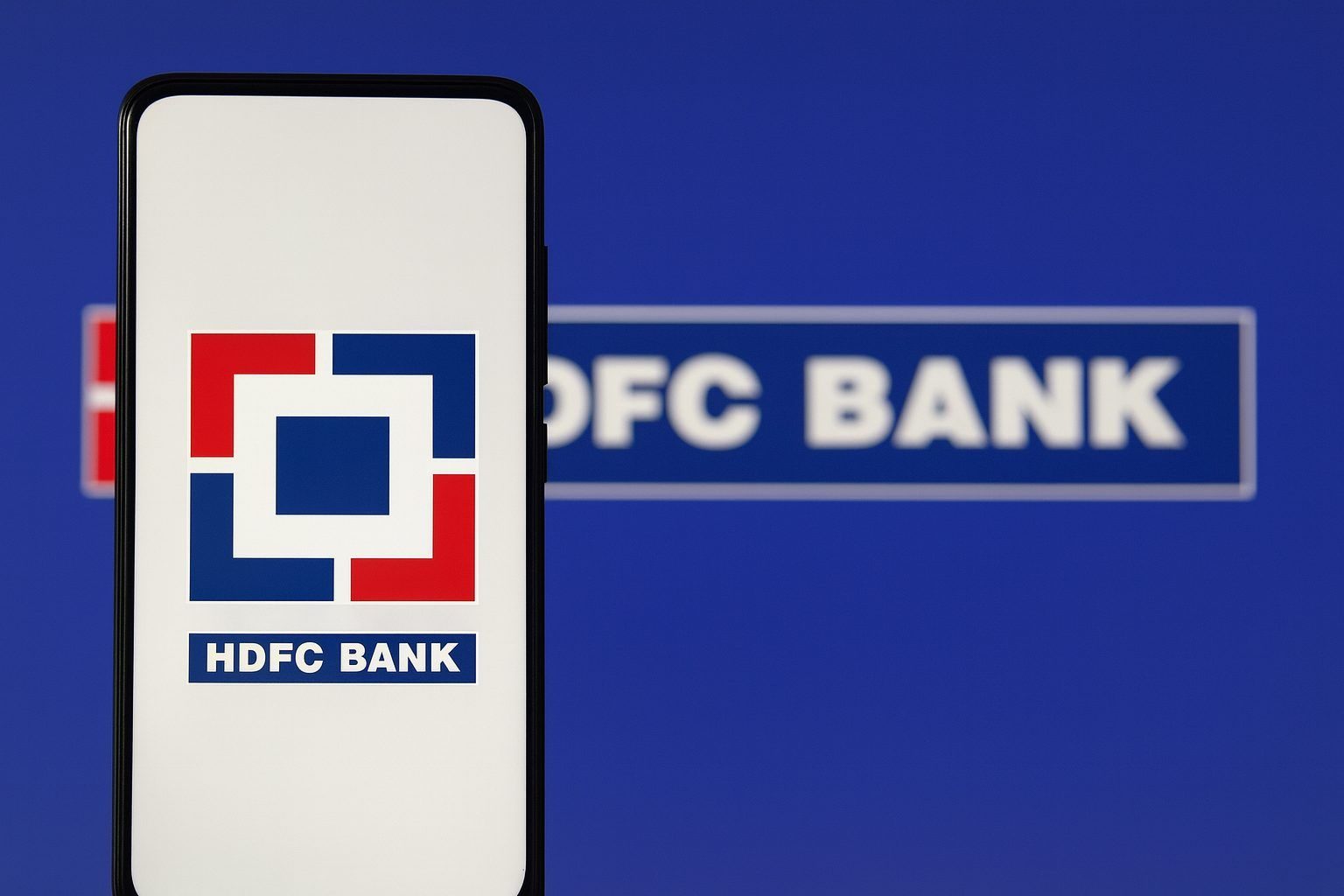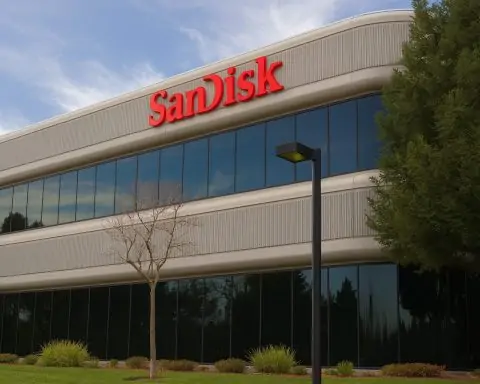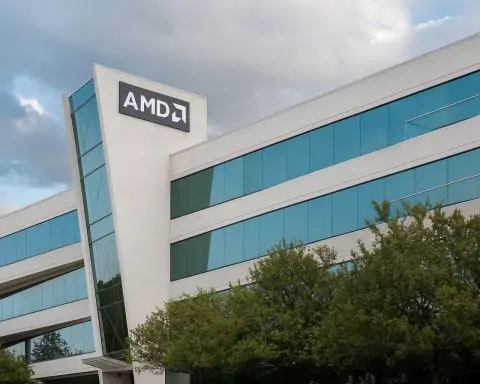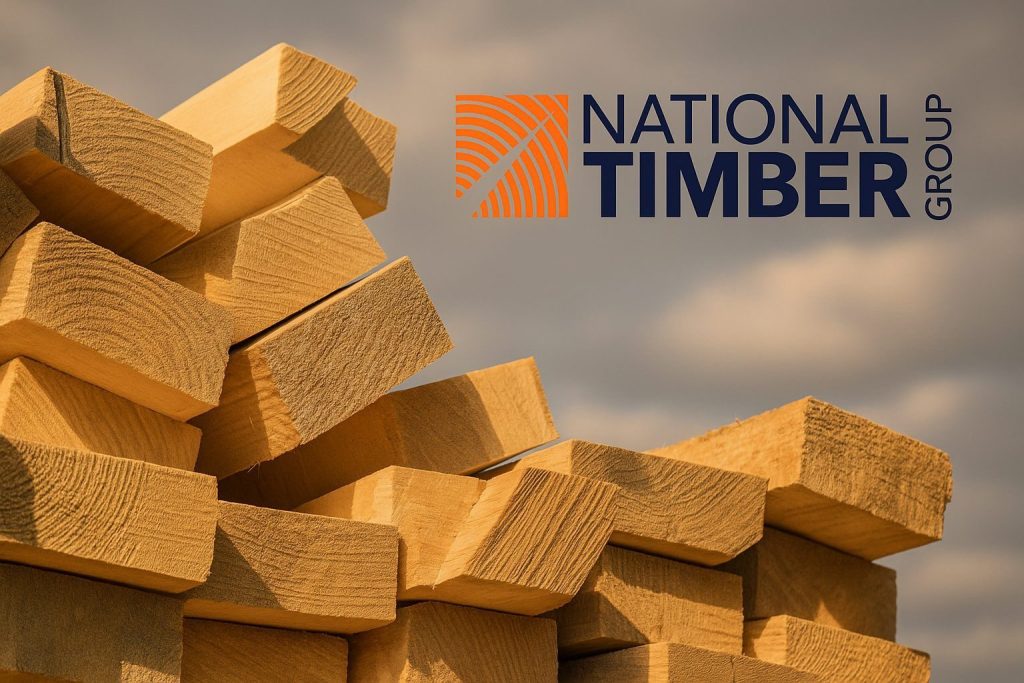Shares of HDFC Bank Limited (NSE: HDFCBANK, BSE: 500180) traded close to their 52‑week high on Thursday, 27 November 2025, helping propel the Nifty 50 to a fresh record above 26,300 and keeping banking stocks firmly in focus. [1]
By late trade, HDFC Bank was hovering around ₹1,010–1,015, up roughly 0.5–1% versus Wednesday’s close, with multiple market data providers reporting an intraday high near ₹1,016–1,017 and a low around ₹1,001. [2]
At the same time, a flurry of fresh brokerage commentary, an ESOP share allotment announcement, and strong index-level support from financials kept HDFC Bank squarely in the news cycle for the day. [3]
HDFC Bank share price today: key levels on NSE and BSE
Different data vendors show slightly different snapshots through the session, but they all paint a consistent picture: HDFC Bank spent most of 27 November grinding higher in a relatively narrow but bullish range.
Key price and trading highlights for 27 November 2025
- Last traded price (mid‑afternoon): about ₹1,012 per share as per Economic Times’ liveblog, implying a daily gain of around 0.7–1.2%. [4]
- Provisional close: analytics and market wrap sources indicate HDFC Bank ended the day near ₹1,013, up about 0.9%, with a traded value of roughly ₹1,302 crore, making it one of the most actively traded counters on the market. [5]
- Day’s range: roughly ₹1,001 on the downside to about ₹1,016–1,017 on the upside, according to exchange-linked data and historical price feeds. [6]
- 52‑week range: around ₹812–₹1,020, meaning today’s price is within a couple of percent of the stock’s 52‑week high. [7]
- Market capitalisation: roughly ₹15.4–15.5 lakh crore, depending on the intraday price snapshot. [8]
- Volume: ET’s liveblog pegs volume near 1.95 crore shares by 2:26 pm IST, versus a weekly average around 2.29 crore, underscoring strong but not euphoric activity. [9]
From a slightly longer lens, the same liveblog notes that HDFC Bank’s weekly return is just under 1%, its one‑month return is under 1%, and its three‑month return is a little over 3%. [10]
Separately, broker platforms such as Dhan and INDmoney estimate 1‑year absolute returns of around 11–12%, with 3‑year and 5‑year returns in the mid‑20s and about 40% respectively. [11]
All told, today’s move is incremental rather than explosive, but it comes at a technically important zone near the stock’s 52‑week peak — which is exactly the kind of setup that tends to attract both momentum traders and long‑term investors checking whether the rally still has room to run.
HDFC Bank helps Nifty 50 hit a new all‑time high
The broader market context is crucial to understanding HDFC Bank’s stock action today.
According to Economic Times, the Nifty 50 index hit a fresh record high of 26,310.45 in Thursday’s session, with financials, IT, infrastructure and consumption‑oriented stocks powering the advance. [12]
Within the index:
- HDFC Bank gained about 1.18%,
- ICICI Bank added around 1.1%, and
- heavyweights like Bajaj Finance, Bajaj Finserv and Larsen & Toubro also contributed meaningfully to the rally. [13]
A separate market wrap from Analytics Insight notes that: [14]
- The Sensex closed around 85,866 (up roughly 256 points),
- The Nifty ended near 26,251 (up close to 0.17%), and
- HDFC Bank finished the day up 0.90% at about ₹1,012.95, topping the “most active stocks” list by traded value, with turnover above ₹1,300 crore.
The Nifty Bank index itself moved to around 59,781, up about 0.4%, as traders continued to favour large private sector banks over weaker small‑cap names ahead of the early‑December RBI policy meeting. [15]
In short, HDFC Bank is not just rising with the market — it is one of the key pillars of today’s index-level gains.
Fresh news on 27 November: ESOP allotment and liveblog updates
On the corporate news front, 27 November brought a notable regulatory update:
- Economic Times’ HDFC Bank liveblog is headlined around an “Announcement under Regulation 30 (LODR) – Allotment of ESOP/ESPS”, pointing to a fresh filing with the exchanges about allotment of equity shares under the bank’s employee stock option / share purchase schemes. [16]
While the underlying BSE filing PDF is not fully accessible, the description confirms that new equity shares have been issued to employees under ESOP/RSU frameworks — a routine but important mechanism through which HDFC Bank continues to align employee incentives with long‑term shareholder value. [17]
The same liveblog also highlights several intraday data points and performance metrics, including:
- Last traded price around ₹1,010–1,015 through the afternoon,
- A price‑to‑earnings (P/E) ratio near 21.5 and
- Earnings per share (EPS) around ₹47, on a trailing basis. [18]
These numbers frame HDFC Bank more as a steady compounder at a moderate valuation than as a high‑beta speculative trade.
Brokerage sentiment: Macquarie turns overtly positive, Elara Capital sees 13% upside
Two pieces of brokerage news stand out around HDFC Bank today:
1. Macquarie names HDFC Bank a “top core choice”
A new strategy note from Macquarie, covered by NDTV Profit, has turned explicitly positive on Indian equities for calendar 2026 and names HDFC Bank as one of its “top core choices”, alongside Reliance Industries, Mahindra & Mahindra, Divi’s Laboratories and JSW Steel. [19]
Key points from the report:
- Macquarie now sees risks “tilting favourably” for India and expects the Nifty 50 to be closer to 30,000 than 20,000 by December 2026. [20]
- The brokerage cites three structural tailwinds:
- AI‑linked data centre capex,
- India’s growing role in global supply chains, and
- A re‑accelerating domestic consumer. [21]
- Within this framework, HDFC Bank is positioned as a core long‑term holding that could benefit from both credit growth and financial deepening in the economy.
For HDFC Bank shareholders, being explicitly highlighted as a top‑tier “core” idea in a major global broker’s India basket adds a layer of confidence, especially after a year where India has underperformed some emerging‑market peers, despite strong multi‑year returns. [22]
2. Elara Capital reiterates a high double‑digit upside
Economic Times’ liveblog also flags a fresh note from Elara Capital, which: [23]
- Reiterates a target price of ₹1,147 for HDFC Bank,
- Implies about 13–14% upside from the ₹990 level at which the call was first framed, and
- Was highlighted again today while the stock traded just above ₹1,010.
When you put this alongside aggregated analyst data from Trendlyne, which pegs the average target near ₹1,125 (about 11–12% upside from the current region), the takeaway is that consensus remains moderately bullish but not euphoric. [24]
Valuation check: is HDFC Bank expensive after the recent rally?
Valuation is where investor opinions start to diverge — which is exactly why it’s useful to anchor on numbers.
Trading multiples
- ET’s liveblog places HDFC Bank’s trailing P/E around 21.5x with trailing EPS near ₹47. [25]
- Fundamental screeners show the stock at roughly 2.8–2.9x price‑to‑book (P/B) on consolidated FY25 numbers. [26]
For a large, systemically important private bank with mid‑teens return on equity, these multiples are neither bargain‑basement nor stretched by historical standards. [27]
Intrinsic value and fair‑value estimates
Valuation platform Smart‑Investing estimates an “intrinsic value” for HDFC Bank near ₹1,199 per share, based on a blend of EV/EBITDA, EV/Sales and Price/Sales models as of 26 November 2025. [28]
- With the stock trading around ₹1,010 today, that implies roughly 15–20% “theoretical” upside on their model.
- However, the same site categorises the stock as “fairly valued”, not deeply undervalued, highlighting that part of this upside may already reflect growth expectations built into the models. [29]
Overlay this with the sell‑side consensus target around ₹1,125–1,150 and the message is broadly consistent: HDFC Bank may still have a mid‑teens upside in a base‑case scenario, but the easy re‑rating from low valuations appears largely behind it. [30]
Fundamentals: growth, asset quality and profitability remain robust
Beyond today’s price action, HDFC Bank’s fundamentals remain the anchor for long‑term investors.
Growth and profitability
Screener data on the bank’s consolidated financials highlight: [31]
- Compounded profit growth of roughly 21% over the past 10 years,
- Sales (revenue) growth around 21–22% annually over the last decade,
- Return on equity (ROE) in the mid‑teens (about 16% on a 10‑year average, and around 14% in FY25), and
- Stock price CAGR of approximately 14% over 10 years, but a more modest 7–8% annualised over the past 3–5 years, reflecting a period of consolidation.
This profile is classic “quality compounder” territory: double‑digit earnings growth, healthy ROE, and a strong long‑term share‑price record, albeit with more muted gains recently as the stock digested the HDFC Ltd merger, funding‑cost shifts and evolving regulatory capital needs. [32]
Asset quality and NPAs
Smart‑Investing’s dashboard points to extremely low net non‑performing assets (NPAs) on a consolidated basis: [33]
- Net NPA ratios for FY2023–2025 sit in the sub‑0.3% range, with the latest number effectively at or near 0% on a consolidated read,
- Reinforcing HDFC Bank’s reputation for conservative underwriting and disciplined risk management.
This is a key differentiator in a year when credit quality concerns have returned for several smaller lenders and NBFCs.
How has HDFC Bank stock performed over different time frames?
Pulling together data from exchange feeds, liveblogs and broker platforms gives a clearer sense of where HDFC Bank sits in its cycle: [34]
Approximate total returns (price‑only, rounded):
- 1 week: ~1%
- 1 month: ~1%
- 3 months: ~3%
- 1 year: ~11–12%
- 3 years: ~25–26% cumulative (around 8% annualised)
- 5 years: ~40% cumulative (around 7% annualised)
- 10 years: ~14% annualised stock‑price CAGR
The pattern is clear:
- Short‑term: The stock has inched higher but not exploded, even as indices hit record highs.
- Medium‑term (3–5 years): Returns have been respectable but not spectacular, reflecting digestion of the merger, bouts of foreign selling and sector rotation.
- Long‑term: HDFC Bank remains a core compounder, rewarding patient holders with solid double‑digit annualised gains.
For many institutional investors, this risk‑reward profile is exactly why HDFC Bank still features prominently in long‑only and India‑focused portfolios, even if the stock is no longer “cheap” on traditional metrics. [35]
Corporate and strategic developments linked to HDFC Bank today
While today’s headline corporate filing is centred on ESOP/ESPS allotments, there are other strategic developments in the wider HDFC ecosystem worth tracking:
- A newswire report from The Week notes that HDFC Capital, a subsidiary associated with HDFC Bank, has teamed up with Hero Realty to create a ₹1,000‑crore platform, focused on residential projects and affordable or mid‑income housing. [36]
- HDFC Capital acts as investment manager to multiple SEBI‑registered Category II AIFs, and such platforms typically aim to generate fee income and investment returns while supporting the bank’s broader real‑estate financing ecosystem. [37]
Although the direct earnings impact from such platforms may be incremental in the near term, they underline HDFC Bank’s strategy of staying embedded in India’s housing and infrastructure growth story.
How global investors are reading HDFC Bank: ADR performance
For international investors, HDFC Bank also trades in the US via its NYSE‑listed American Depositary Receipt (ADR), ticker HDB.
As of the latest tick, the ADR:
- Trades near $36.6,
- Is up just over 1% versus the previous close, and
- Has seen intraday ranges between $36.3 and $36.8.
The ADR’s move largely mirrors the positive tone in the Indian market, reinforcing the view that global investors continue to treat HDFC Bank as a core India proxy, especially when macro sentiment on the country turns favourable.
What today’s move means for HDFC Bank investors
Putting all of this together, 27 November 2025 looks like an incremental but constructive day for HDFC Bank shareholders:
- Price action: The stock is nudging closer to its 52‑week high, but in a measured, low‑volatility fashion, supported by healthy volumes rather than a speculative spike. [38]
- Market role: HDFC Bank remains a key index driver, helping the Nifty 50 and Nifty Bank hold or extend record territory, which in turn keeps passive and ETF money anchored to the name. [39]
- Broker sentiment:
- Macquarie’s “top core choice” tag and its bullish India roadmap to Nifty 30,000 for 2026 send a strong signal to global institutional money. [40]
- Elara Capital’s ₹1,147 target and consensus targets around ₹1,125 suggest mid‑teens upside from current levels, barring any macro or bank‑specific shocks. [41]
- Fundamentals: Multi‑year data still show robust earnings growth, solid ROE and very low NPAs, supporting the perception of HDFC Bank as one of India’s most systemically important “quality” lenders. [42]
- Valuation: At around 21–22x earnings and under 3x book, with intrinsic value models and Street targets implying mid‑teens upside, HDFC Bank looks reasonably priced rather than screamingly cheap or bubble‑level expensive. [43]
For investors, the key question is less “Will HDFC Bank double quickly?” and more “Does a mid‑teens potential upside, plus 10–12% earnings growth and dividends, justify owning a large, relatively low‑beta bank at this stage of the cycle?”
Key things to watch ahead
Looking beyond today’s numbers, several near‑term catalysts could influence HDFC Bank’s stock trajectory:
- RBI policy in early December: Market commentary highlights the upcoming Monetary Policy Committee meeting, with investors watching for signals on rate cuts, liquidity stance and credit growth guidance — all critical variables for banking stocks. [44]
- Deposit and loan growth trends: Post‑merger, investors continue to track deposit accretion, CASA ratios and cost of funds, as well as the mix of retail vs. wholesale loans. [45]
- Integration and capital: The HDFC Ltd merger reshaped the balance sheet, and the market will keep an eye on capital ratios, mortgage growth and any incremental regulatory changes. [46]
- Global risk sentiment: As a major EM proxy, HDFC Bank can still be affected by foreign flows, global rate expectations and risk‑on/risk‑off episodes, even when its domestic fundamentals are steady. [47]
Quick FAQ: HDFC Bank stock today (27 November 2025)
1. What is the HDFC Bank share price today?
On 27 November 2025, HDFC Bank:
- Traded mostly around ₹1,010–1,015 through the session,
- Closed near ₹1,013, up about 0.9%, according to market wrap reports. [48]
Exact figures can vary slightly depending on the source and whether you look at NSE or BSE closing data.
2. What is HDFC Bank’s 52‑week high and low?
Most market data providers show: [49]
- 52‑week high: around ₹1,020–1,021
- 52‑week low: around ₹812–813
At today’s price near ₹1,010, HDFC Bank is trading just a few percent below its 52‑week high and more than 20% above its 52‑week low.
3. What is the consensus target price for HDFC Bank?
Aggregate broker data from Trendlyne suggests: [50]
- An average target price around ₹1,125 per share,
- Which implies roughly 11–12% upside from the ₹1,010 region.
Individual brokers like Elara Capital are slightly more optimistic, with a ₹1,147 target (about 13–14% upside) referenced in today’s live market commentary. [51]
4. Is HDFC Bank a buy, sell or hold right now?
No single label fits every investor, but today’s data suggest:
- Brokerages are broadly positive, with HDFC Bank listed as a “top core choice” for 2026 by Macquarie and tagged with double‑digit upside targets by several houses. [52]
- Valuation is moderate, not distressed; at roughly 21–22x earnings and under 3x book, much of the bank’s quality is already priced in, but not to extreme levels. [53]
- Fundamentals — growth, ROE, NPAs — remain strong, which is why many long‑only funds continue to hold it as a core India banking play. [54]
Whether that makes HDFC Bank a buy, hold or trim for you personally depends on your time horizon, risk appetite, existing exposure to financials and views on India’s macro cycle. It’s wise to compare these numbers with your portfolio goals or speak with a qualified adviser before making decisions.
5. How did HDFC Bank’s US‑listed ADR (HDB) perform?
HDFC Bank’s NYSE‑listed ADR (HDB):
- Recently traded around $36.6,
- Was up a little over 1% on the day,
- And showed intraday moves between $36.3 and $36.8.
This broadly echoes the positive sentiment seen in the Indian listing on 27 November.
References
1. m.economictimes.com, 2. www.investing.com, 3. m.economictimes.com, 4. m.economictimes.com, 5. www.analyticsinsight.net, 6. www.investing.com, 7. dhan.co, 8. m.economictimes.com, 9. m.economictimes.com, 10. m.economictimes.com, 11. dhan.co, 12. m.economictimes.com, 13. m.economictimes.com, 14. www.analyticsinsight.net, 15. www.analyticsinsight.net, 16. m.economictimes.com, 17. m.economictimes.com, 18. m.economictimes.com, 19. www.ndtvprofit.com, 20. www.ndtvprofit.com, 21. www.ndtvprofit.com, 22. www.ndtvprofit.com, 23. m.economictimes.com, 24. trendlyne.com, 25. m.economictimes.com, 26. www.screener.in, 27. www.screener.in, 28. www.smart-investing.in, 29. www.smart-investing.in, 30. trendlyne.com, 31. www.screener.in, 32. www.screener.in, 33. www.smart-investing.in, 34. m.economictimes.com, 35. www.ndtvprofit.com, 36. www.theweek.in, 37. www.theweek.in, 38. www.analyticsinsight.net, 39. m.economictimes.com, 40. www.ndtvprofit.com, 41. m.economictimes.com, 42. www.screener.in, 43. m.economictimes.com, 44. www.analyticsinsight.net, 45. www.screener.in, 46. www.screener.in, 47. www.ndtvprofit.com, 48. www.analyticsinsight.net, 49. dhan.co, 50. trendlyne.com, 51. m.economictimes.com, 52. www.ndtvprofit.com, 53. m.economictimes.com, 54. www.screener.in







